
@marhava.bsky.social and myself have edited a special issue on Auxin for Physiologia plantarum! Have a look at the nice contributions! @umeaplantsciencecentre.se
onlinelibrary.wiley.com/doi/toc/10.1...
@rahulpvnewland.bsky.social
Postdoctoral Researcher (2025-, UPSC, SLU, Sweden) | PhD (2017-2024, PCDB Group, IISERBhopal) | BS-MS (2012-17, IISERB) | 🇮🇳🇸🇪 Plant Cell & Development 🌱🔬/ Light Signaling 💡/ Flowering 🌺 https://scholar.google.com/citations?user=JnVMydYAAAAJ&hl=en

@marhava.bsky.social and myself have edited a special issue on Auxin for Physiologia plantarum! Have a look at the nice contributions! @umeaplantsciencecentre.se
onlinelibrary.wiley.com/doi/toc/10.1...

Humbled to be a part of Indian Science Academies, @ IAScBng, @nasi_academy, and Now @insa_academy
Such moments remind me how fortunate I am to work with talented lab members (past and present), collaborators, colleagues and mentors all along. Thank you for this opportunity 🙏

ELONGATED HYPOCOTYL 5 and miR156d orchestrate axillary meristem maturation and AHL15-mediated plant longevity (Subhash Reddy Gaddam, Ashish Sharma, Anwesha Anyatama, Prabodh Kumar Trivedi) doi.org/10.1093/plph... #PlantScience
24.09.2025 12:57 — 👍 6 🔁 2 💬 0 📌 1

Having fun with the group for Sandeep Farewell! @sharmavinod.bsky.social @siamsadoyle.bsky.social @loupitgreg.bsky.social @sandeep18887.bsky.social @absolutemaverick.bsky.social @umeaplantsciencecentre.se
23.09.2025 07:59 — 👍 19 🔁 4 💬 1 📌 0
Thrilled to share our latest story on the ERAD machinery and how it controls the conditional turnover of PIN-LIKES for acclimative growth
www.science.org/doi/10.1126/...

What a cool story presented by @elkebarbez.bsky.social from @uni-freiburg.de at @umeaplantsciencecentre.se !!
05.09.2025 11:12 — 👍 14 🔁 4 💬 0 📌 0
Honoured & excited that ‘Breathing Underground’ has been funded by the ERC!
This will let me explore one of the most fundamental questions of plant life: how roots breathe underground? @erc.europa.eu
Looks great! We are looking forward to hear more about the proceedings!
03.09.2025 10:39 — 👍 4 🔁 1 💬 0 📌 0

STARMORPH kick off went smoothly! Nice group of young scientists to work together with! Fantastic couple of days! @xanderjones.bsky.social @kleinevehnlab.bsky.social @nowako76.bsky.social @srobertgroup.bsky.social @erc.europa.eu @umeaplantsciencecentre.se
03.09.2025 09:47 — 👍 12 🔁 6 💬 0 📌 1
IN BRIEF: Sugar, we’re going down: PRC2-mediated epigenetic repression of sucrose metabolism promotes phototrophy during seedling establishment (Rory Osborne) doi.org/10.1093/plce... #PlantScience
02.09.2025 17:38 — 👍 18 🔁 7 💬 1 📌 2
Amazing how responsive different regions of the same tissue type is to tissue culture hormones! Here is the hypocotyl of a plant segmented into lower hypocotyl (seedling stem near root crown) left, middle hypocotyl, and upper hypocotyl right (seed stem near cotyledons).
01.09.2025 20:54 — 👍 30 🔁 5 💬 2 📌 0Fun on the way!
01.09.2025 13:35 — 👍 2 🔁 1 💬 0 📌 0



STARMORPH kick off in @umeaplantsciencecentre.se ! People of the STARMORPH on their way or already enjoying north Sweden! @xanderjones.bsky.social @nowako76.bsky.social @kleinevehnlab.bsky.social @srobertgroup.bsky.social
01.09.2025 13:19 — 👍 7 🔁 3 💬 0 📌 1
This paper was dedicated to the memory of the late Joanne Chory:
Coincidence detection of low temperature and blue light and the control of flowering (by A. Seluzicki & J. Chory)
www.nature.com/articles/s41...

Inducible RUBY expression in independent transformant lines of A.thaliana over 4 days.
Several lines (top) show induction everywhere except the petals... cool but I'd prefer the opposite!!
Nice group effort and determination! Thanks to all involved!
27.08.2025 15:53 — 👍 12 🔁 4 💬 0 📌 0
STARMORPH is represented at the FASEB #PDevSRC meeting by @srobertgroup.bsky.social who has presented data from her group on apical hook development and cuticle.
26.08.2025 19:18 — 👍 12 🔁 3 💬 0 📌 0
Further evidence that sugar in the plates changes the plant biology you study. Best to avoid putting sugar in the agar, unless you want to study what sugar in the agar does to plants. This paper uses sugar in the agar to study what sugar does. www.nature.com/articles/s41... #plantresearch
24.08.2025 07:45 — 👍 64 🔁 22 💬 2 📌 1Thanks a lot 🙏😊
18.08.2025 11:34 — 👍 0 🔁 0 💬 0 📌 0Thanks a lot 🙏
12.08.2025 16:06 — 👍 0 🔁 0 💬 0 📌 0
SLU

UPSC
Excited to start my new journey as a Postdoctoral Researcher at @srobertgroup.bsky.social SR Group, Swedish University of Agricultural Sciences #SLU, @umeaplantsciencecentre.se!
Looking forward 🤞🙏😇
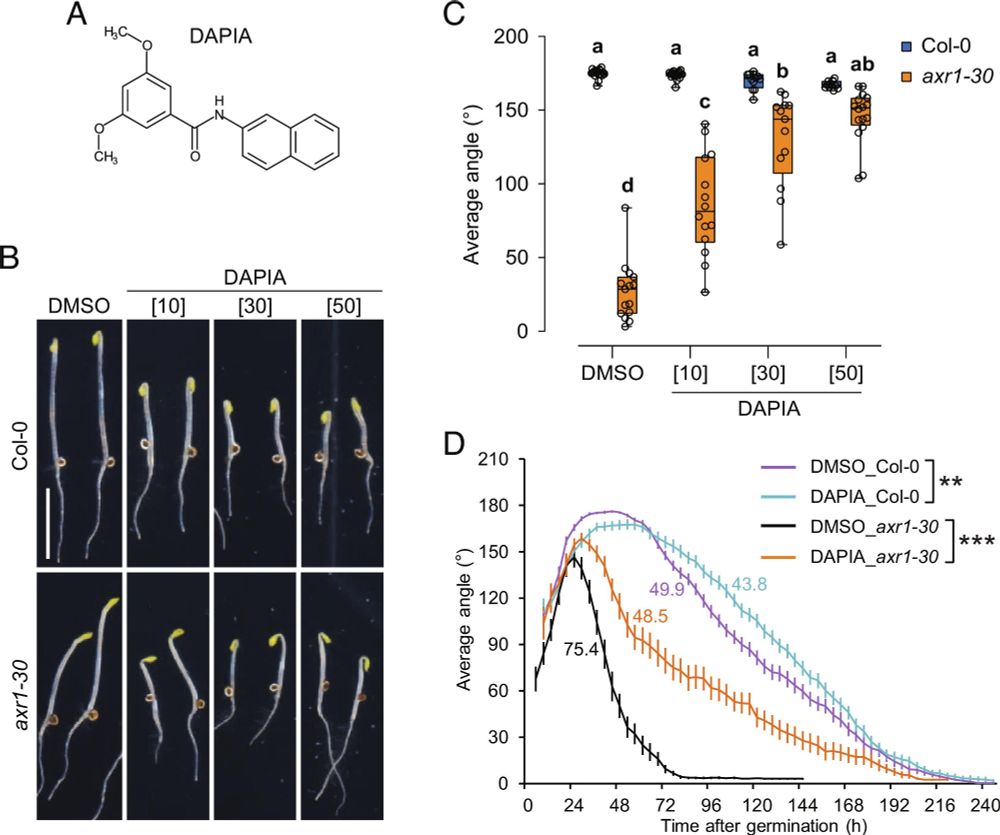
Please find our latest paper in @pnas.org. Lots of work from a fantastic group: Qian Ma, Sijia Liu, @siamsadoyle.bsky.social , Sara Raggi and others including @luciastrader.bsky.social @erc.europa.eu @kawresearch.bsky.social @umeaplantsciencecentre.se
www.pnas.org/doi/10.1073/...
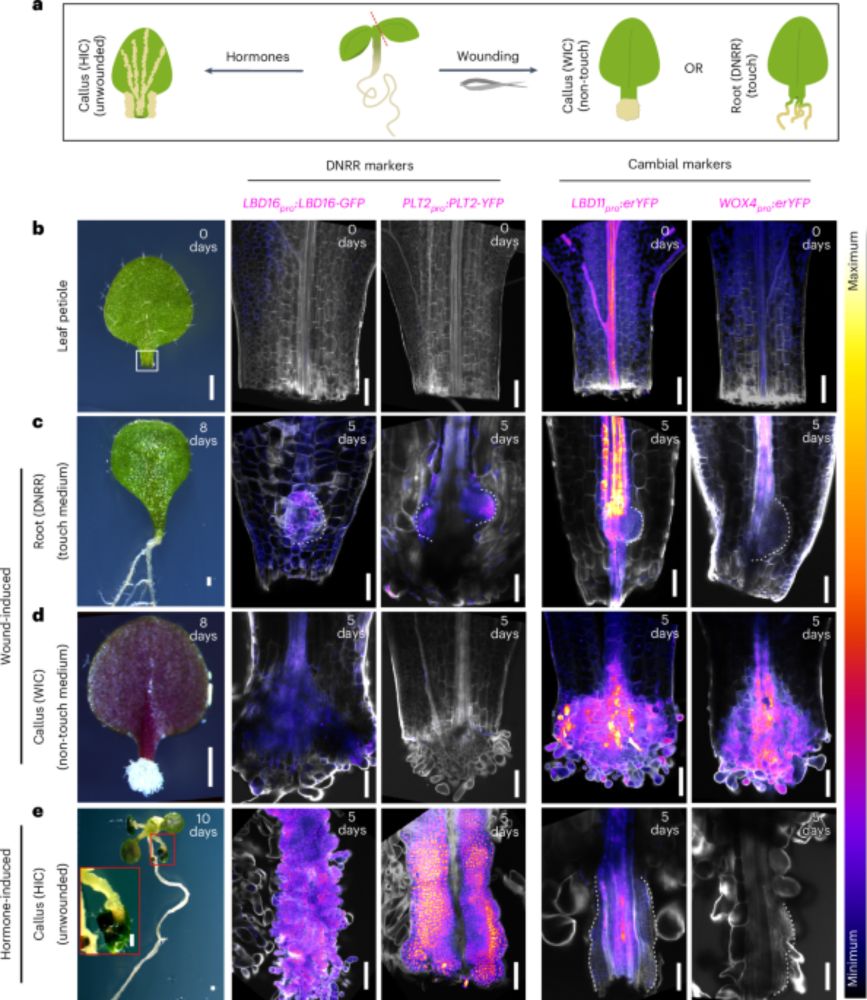
How do plants decide the fate of a wound and what to regenerate? Water availability! Abdul Kareem and colleagues show that regeneration outcomes after tissue cutting are controlled by water. A 🧵/n 👇
www.nature.com/articles/s41...




Who are we? @nowako76.bsky.social @kleinevehnlab.bsky.social @xanderjones.bsky.social @srobertgroup.bsky.social who work together to push the limits of plant morphogenesis understanding! First idea emerged in April 2023, granted in October 2024 by @erc.europa.eu! Starting date: March 2025!
24.06.2025 09:17 — 👍 15 🔁 3 💬 1 📌 0
Epidermal cells acquire different cell shapes to enable their functions and maintain tissue integrity in plants. Meristematic cells differentiate and expand into diverse mature cell types, including jigsaw puzzle-shaped pavement cells (a), round stomatal guard cells (b), elongated epidermal cells in hypocotyls and the apical hook (c), and root epidermal cells with root hairs (d). The spatial distribution and arrangement of cell wall polysaccharides, such as cellulose microfibrils, xyloglucans, and pectins (e.g., homogalacturonan represent as HG), and the abundance of methylester groups on these components in differentiating cells regulate anisotropy during cell growth, enabling the acquisition of specific cell shapes. In addition, proteins like KATANIN and CLASP reorient dynamically the cortical microtubules. These cortical microtubules rearrangement is in response to mechanical cues, either self-generated (as in b, c) or from neighboring cells (a, c), leading to the resulting cell shape. Attribution-NonCommercial-NoDerivatives 4.0 International

Auxin controls cell expansion by regulating cell wall biosynthesis and cell remodeling. Auxin promotes cell expansion by acidifying the cell wall and activating wall synthesis and loosening enzymes. Auxin efflux (PINs) and influx (AUX1) transporters establish concentration gradients in growing tissue. Auxin enters cells via influx transporters and activates the TRANSPORT INHIBITOR RESPONSE 1/AUXIN SIGNALING F-BOX PROTEINS-AUXIN/INDOLE ACETIC ACID (TIR1/AFB-Aux/IAA) nuclear signaling cascade, which regulates auxin-responsive genes, including AUXIN RESPONSE FACTORs (ARFs) and SMALL AUXIN UP RNAs (SAURs). Auxin activates the H+-ATPase proton pump through TRANSMEMBRANE KINASE 1 (TMK1), acidifying the cell wall and triggering loosening enzymes including PECTIN METHYLESTERASEs (PMEs), EXPANSINs, and XYLOGLUCAN:XYLOGLUCOSYL TRANSFERASEs (EXTs). Cellulose microfibrils are synthesized by the plasma membrane-bound cellulose synthase complex (CSC), with cortical microtubules guiding the exocytosis of this complex toward expanding cell edges. Auxin coordinates the reorientation of cortical microtubules and actin filaments to regulate the trafficking of cell wall polysaccharides to ensure proper cell wall expansion and specific cell shape acquisition. Attribution-NonCommercial-NoDerivatives 4.0 International
🌱🧩 How do plant cells get their shape? 🧪
Check out the new #open-access #review exploring the mechanochemical duet between auxin & the cell wall in shaping diverse plant cell types from @srobertgroup.bsky.social's Lab.
🔗 doi.org/10.1111/ppl....
#PlantBiology #CellShape #Auxin #Biomechanics
🍀🎉😊❤️🙏
I am so grateful and proud to be working with Catherine, Joanna, Adrienne and Nan to create the Arabidopsis timeline!
Such a landmark project, published @theplantcell.bsky.social & initiated by NAASC @naascarabidopsis.bsky.social
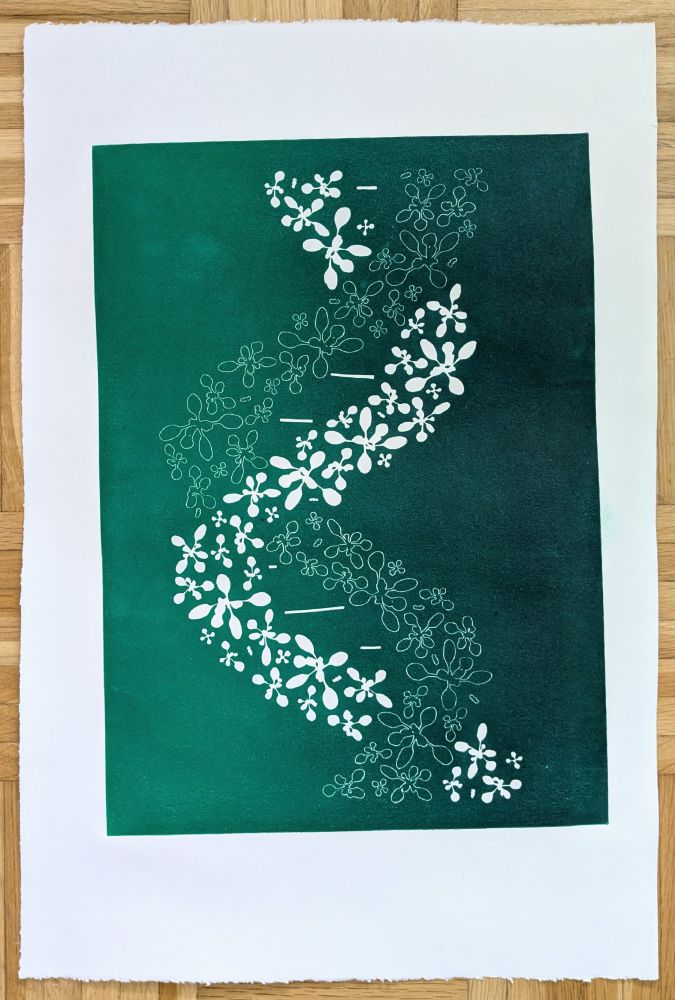
Arabidopsis genetics. 6 stages of Arabidopsis rosettes arranged into 2 helices. Hand printed Spring 2024.
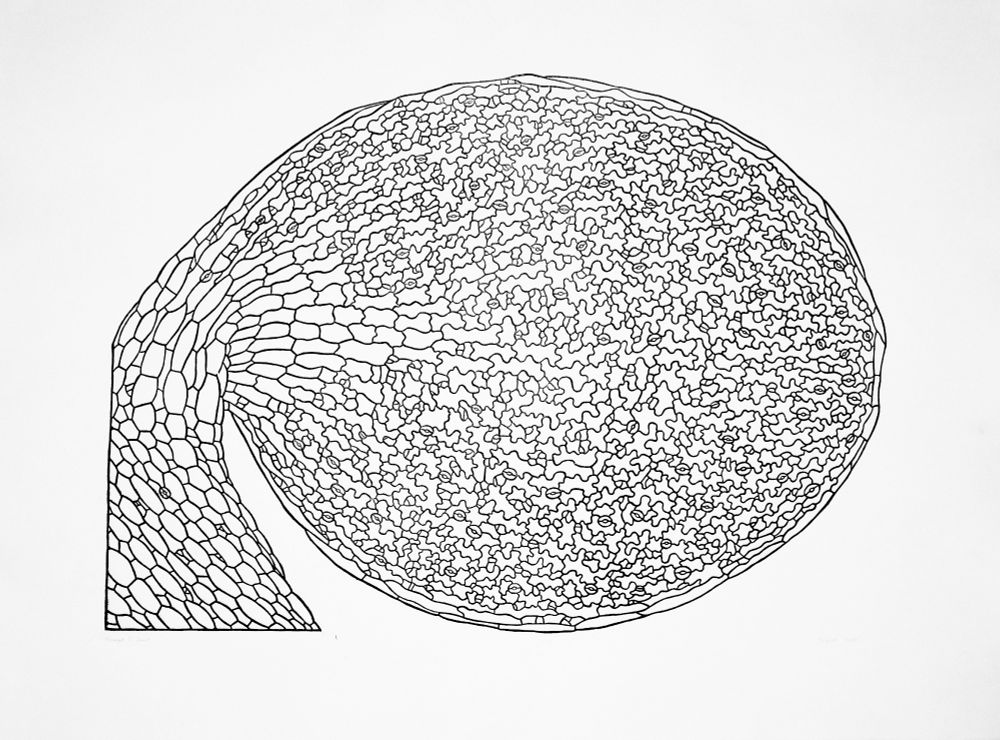
Young leaf. Print based on a microscopy image of a 3-day old Arabidopsis leaf. Press printed August 2022.
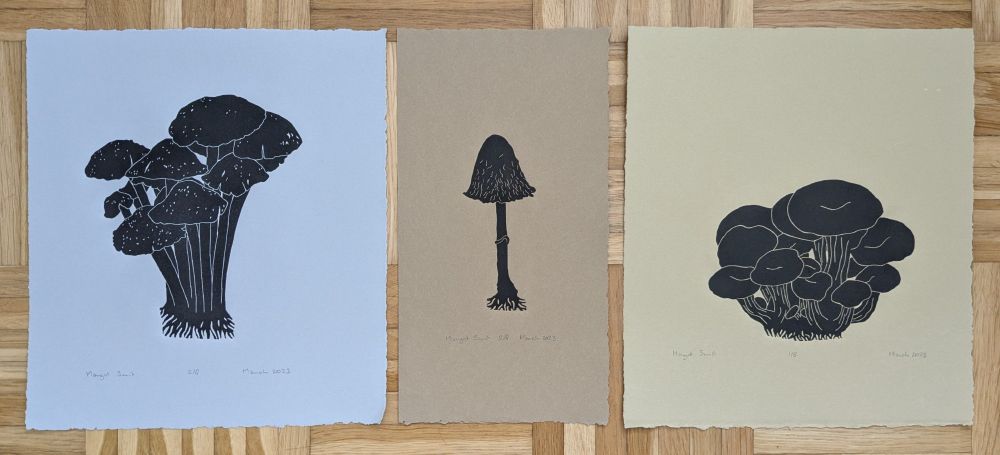
Mushrooms. 3 of 5 total mushrooms. Press printed March 2023.
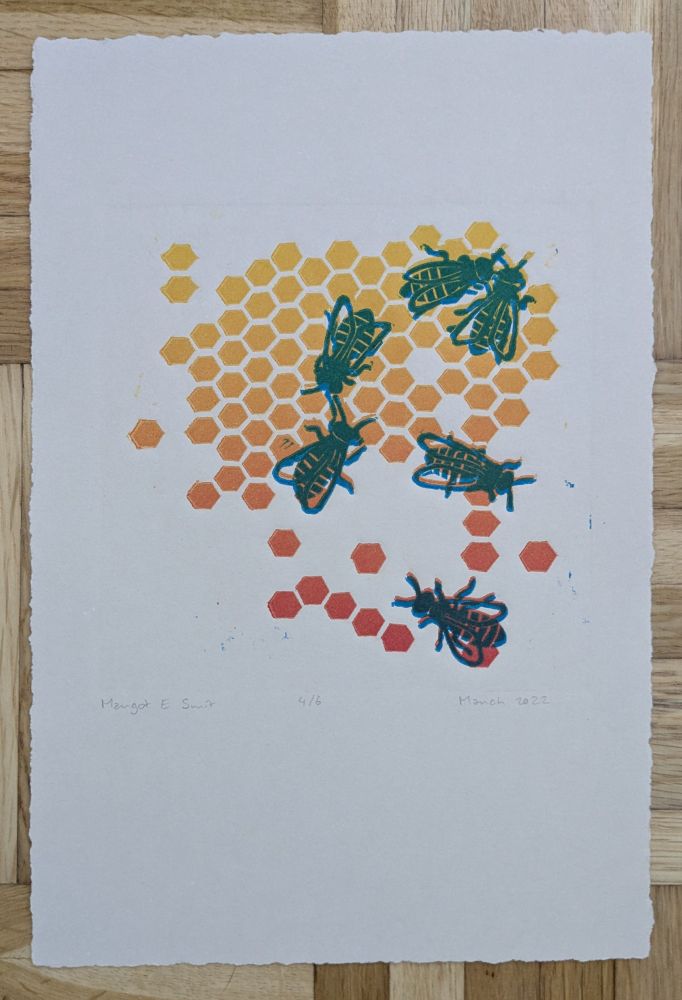
Bees and hexagons. Two-layer print of blue bees on a gradient of hexagons. Press printed March 2022.
In this new #SciArt profile, we meet Margot Smit @likeyoda1.bsky.social, a plant developmental biologists @zmbp-tuebingen.bsky.social. Margot enjoys linocut printmaking. Her designs are often inspired by images from the lab and scenes from nature 🌱
thenode.biologists.com/sciart-profi...

At the GMI, Soumavo Dolui is studying meristem formation by combining advanced microscopy, image segmentation, and transcriptome analysis. Early-career researchers in plant science can gain hands-on experience through I2P, our internship program. Join us! 👇 #internship #biology #studyabroad
26.03.2025 16:00 — 👍 6 🔁 3 💬 1 📌 0
The title pages of the three papers: "Ueber die Art der Wahrnehmung des Schwerkraftreizes bei den Pflanzen" by Bohumil Řehoř Němec (1900), "Ueber die Perception des geotroplschen Reizes" by Gottlieb Johann Friedrich Haberlandt (1900), and "AUX1 regulates root gravitropism in Arabidopsis by facilitating auxin uptake within root apical tissues" by Alan Marchant et al. (1999). On the left, an sketch from Haberlandt, showing a set of cells from a root that was tilted by 13 degrees. The starch granules are visible inside the cells and have shifted from the center to the corners of the cells that is now pointing down along the gravitropic force. On the right is a sketch from Marchant, showing a root tip with arrows that indicate the auxin flow: Down toward the QC inside the vasculature, then out to the sides and back up toward the shoot in the outer tissues. When the root is slightly tilted, the shoot-ward auxin flow is redirected to the lower side, where it inhibits cell elongation. Hence, the cells on the opposite side elongate more, which leads to root bending.
#PlantScienceClassics #19: Root gravitropism: 120 years ago the starch-statolith theory was described, ~100 years ago the Cholodny-Went theory proposed, and 25 years ago the directional auxin flow was mapped as reverse fountain in the root tip. #Phytohormones #Gravitropism #Auxin #PlantScience
19.03.2025 15:14 — 👍 38 🔁 16 💬 1 📌 2
New Article: "NERD-dependent m6A modification of the nascent FLC transcript regulates flowering time in Arabidopsis" rdcu.be/ed0Rf
With News & Views: "A NERDy effect on flowering" rdcu.be/ed0RG #PlantScience